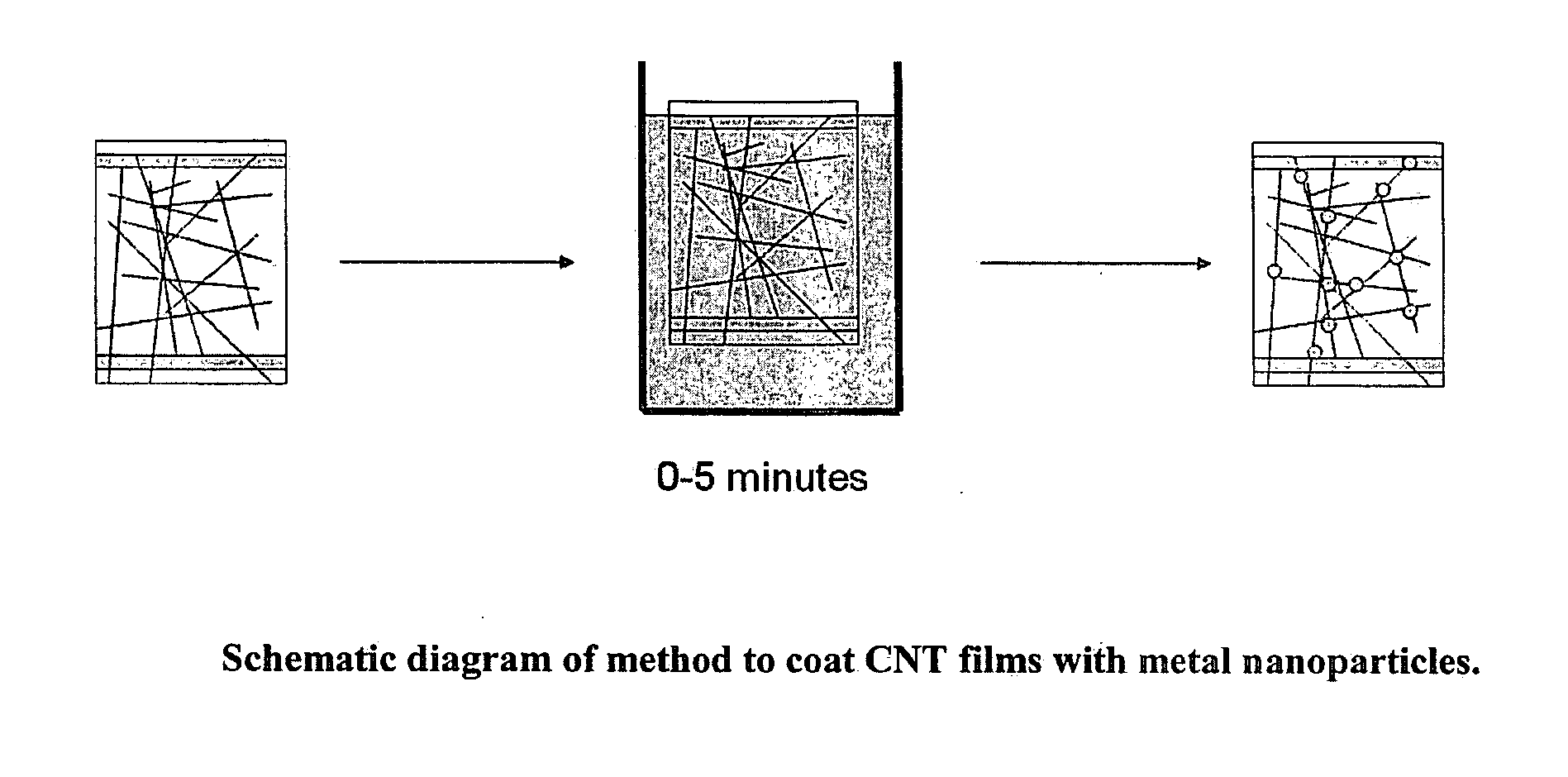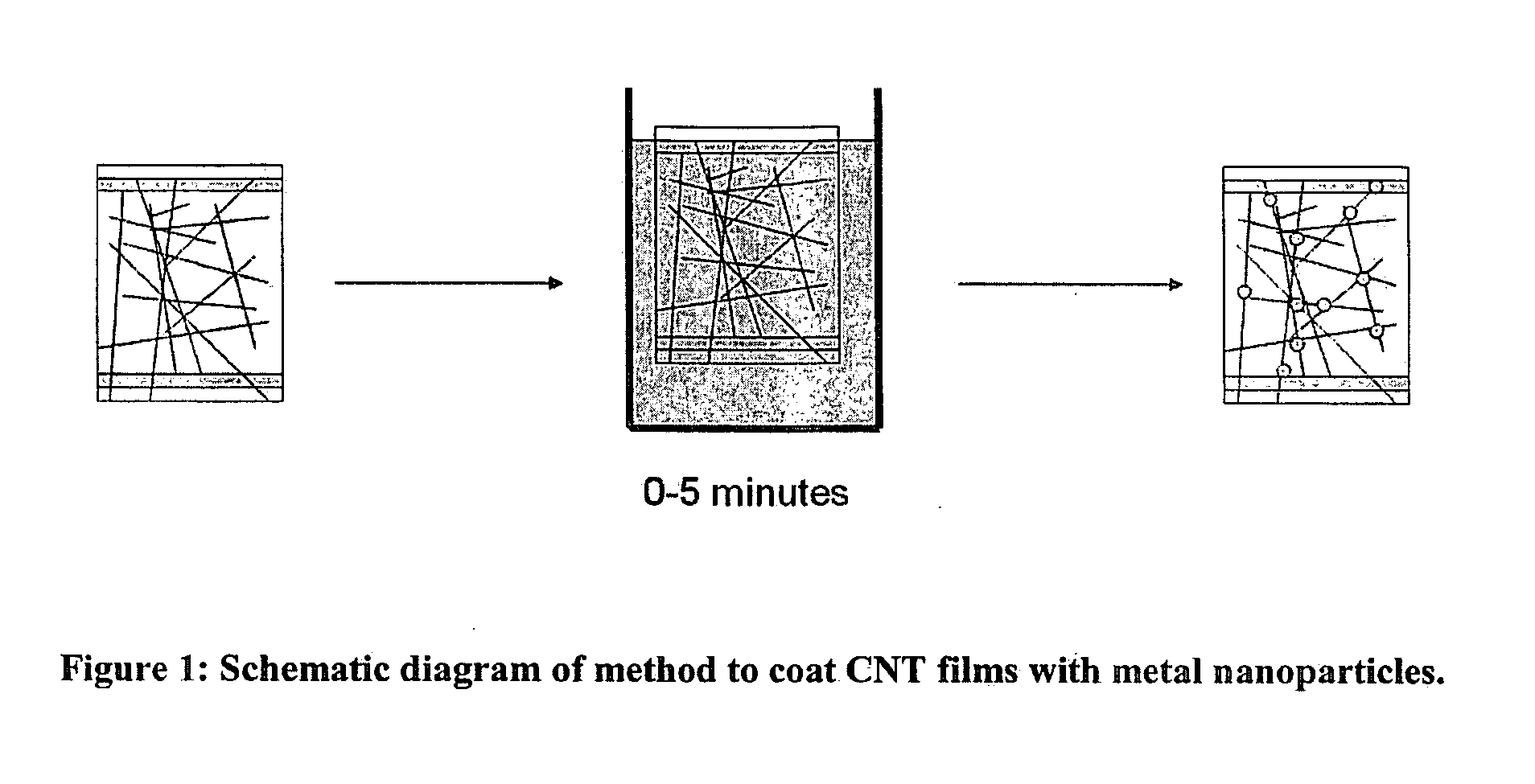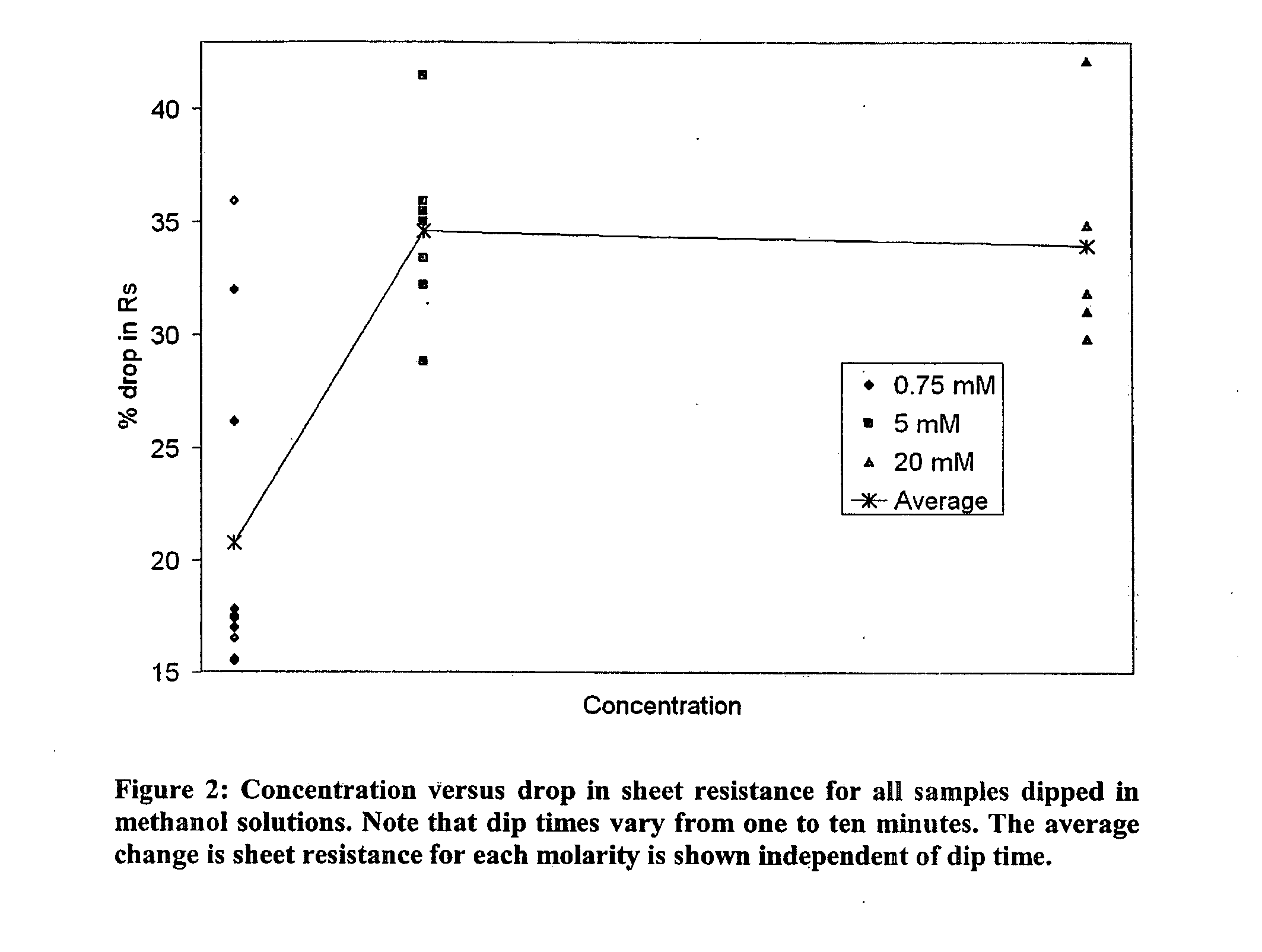Deposition of metals onto nanotube transparent conductors
- Summary
- Abstract
- Description
- Claims
- Application Information
AI Technical Summary
Benefits of technology
Problems solved by technology
Method used
Image
Examples
example 1
Nanoparticle Deposition to Improve Conductivity and RT Performance
[0052]Nanoparticle precipitation from salt solutions of gold, platinum, palladium, and 2 nm colloidal gold were examined in this example. The chemical reactions are:
HAuCl4+CNT→CNT-Au nanoparticle film+HCl+Cl2
K2PtCl4+CNT→CNT-Pt nanoparticle film+KCl+Cl2
Na2PdCl4+CNT→CNT-Pd nanoparticle film+NaCl+Cl2
[0053]Generally, CNTs were spray coated from water and alcohol onto glass slides to make transparent conductive coatings. For this example and other examples, the CNTs used were single walled carbon nanotubes. CNT coated slides were dipped for 0 to 60 minutes in a metal salt solution (FIG. 1). More typically, dip times were kept to less than five minutes. Occasionally, the samples were rinsed after dip coating, but the rinsing process was observed to cause visible tears in the CNT film. Since macroscopic tears inevitably affect sheet resistance and do not accurately portray the microscopic changes of the sample, rinsing sa...
example 2
Depositing Gold Particles from Aurate Salts
[0055]It was surprisingly discovered that HAuCl4 was soluble in a range of alcohols up to high concentrations (>20 mM), making it one of the more versatile metal salts. Aurate salt solutions were bright yellow in all solvents. A 5 mM solution of HAuCl4 was prepared in 1:1 water to ethanol. Several CNT samples were immersed in the solution for a varying length of time, from s, improvement from the aurate salt solution. Additionally, the solution appeared to have an adverse effect on the mechanical properties of the silver electrodes. Frequently, the electrodes would peel off the glass substrate, requiring the test to be repeated.
example 3
Optical Uniformity Improvement with Different Solvents
[0056]To improve on the observed water spots, the dip solvent was changed to methanol, which dries quickly and wets evenly the CNT coated glass. Also, the effect of the concentration of the salt solution on optical uniformity of the coated sample was studied. High aurate salt concentrations had shorter dip times, but caused a high degree of nonuniformity in the sample; more gold precipitated in close proximity to the electrodes due to a different electrochemical potential close to the electrodes. Lower concentration solutions gave a more uniform coating across the length of the sample. The uniformity is improved at low concentrations due to less residual metal salt remaining on the sample upon removal from the dip bath. A concentration dependence was found on the range of Rs, improvement for dip times less than 5 minutes (FIG. 2). Specifically, low concentrations resulted in a smaller improvement in RT performance. This result is...
PUM
 Login to View More
Login to View More Abstract
Description
Claims
Application Information
 Login to View More
Login to View More - R&D
- Intellectual Property
- Life Sciences
- Materials
- Tech Scout
- Unparalleled Data Quality
- Higher Quality Content
- 60% Fewer Hallucinations
Browse by: Latest US Patents, China's latest patents, Technical Efficacy Thesaurus, Application Domain, Technology Topic, Popular Technical Reports.
© 2025 PatSnap. All rights reserved.Legal|Privacy policy|Modern Slavery Act Transparency Statement|Sitemap|About US| Contact US: help@patsnap.com



